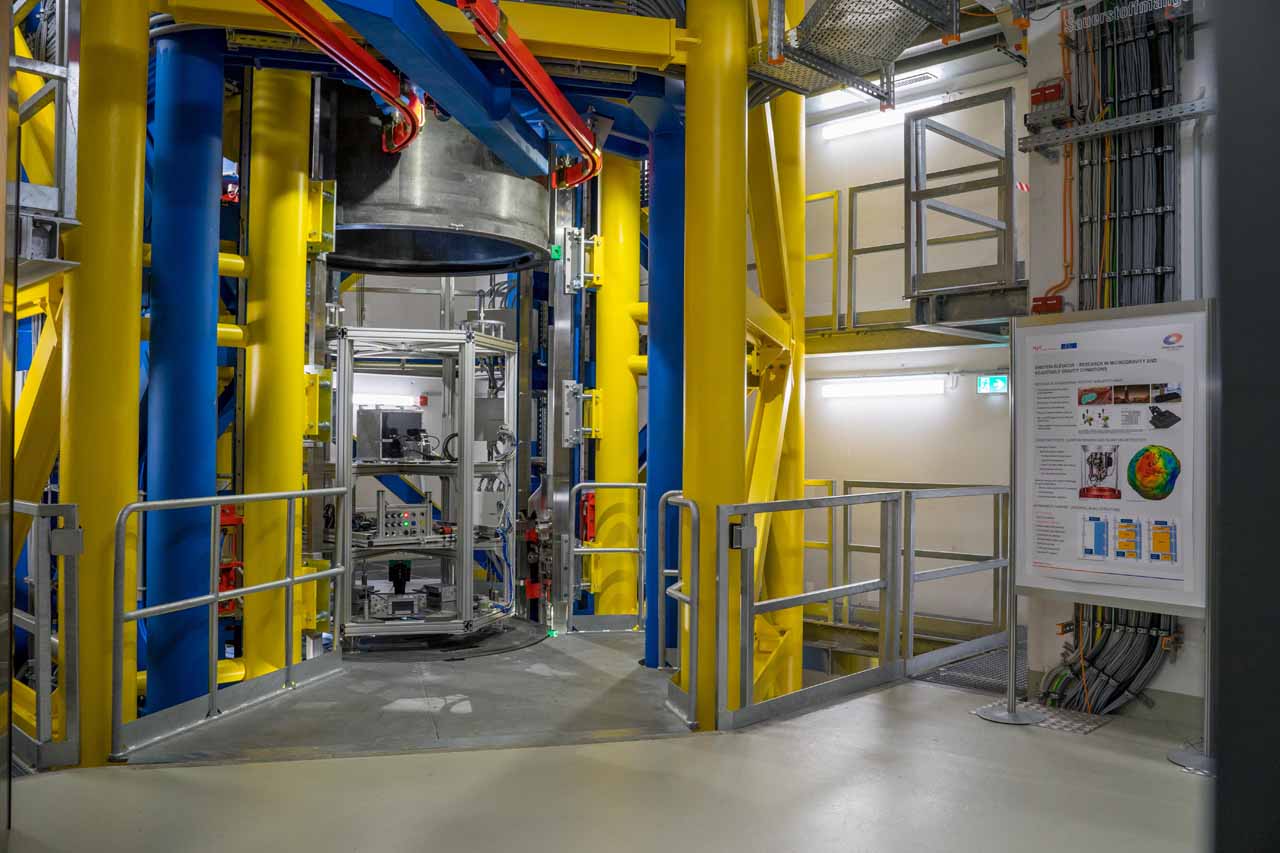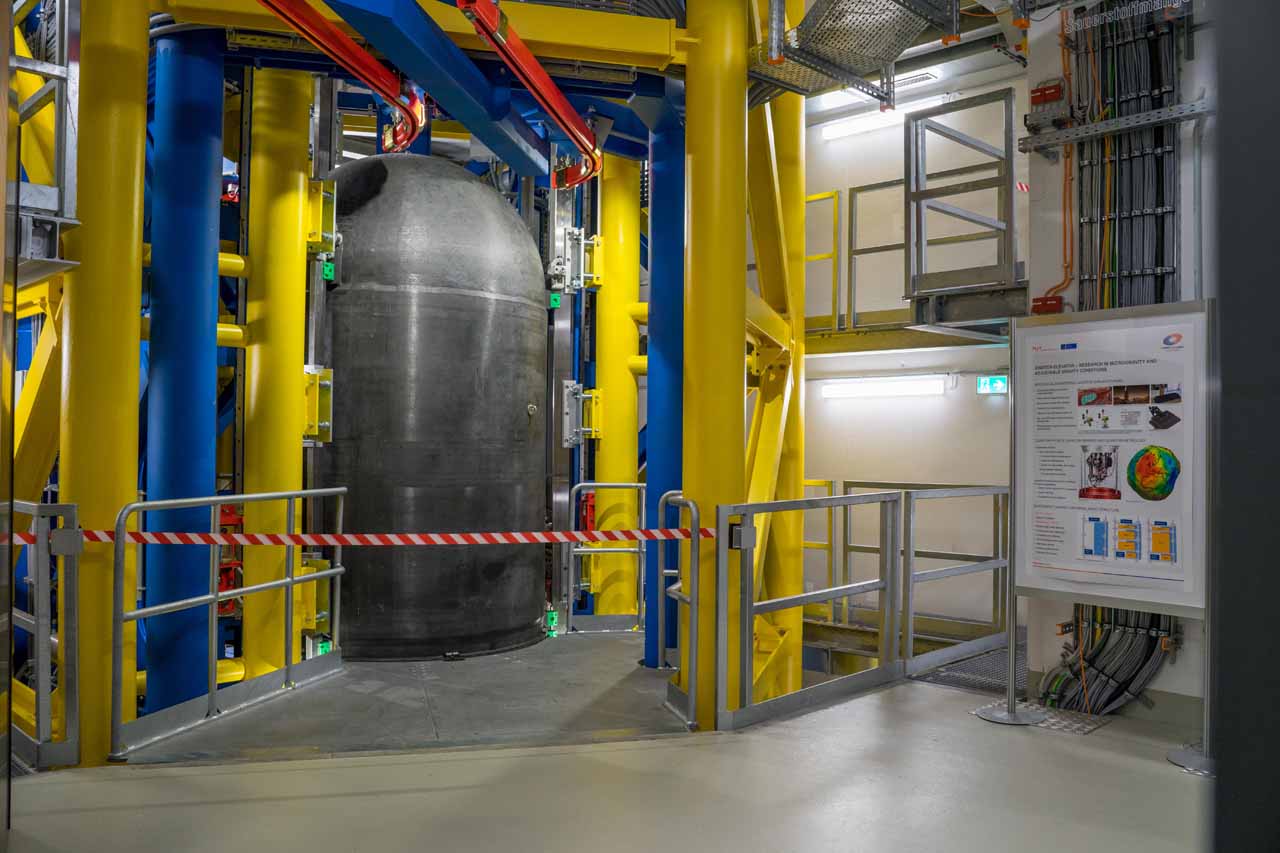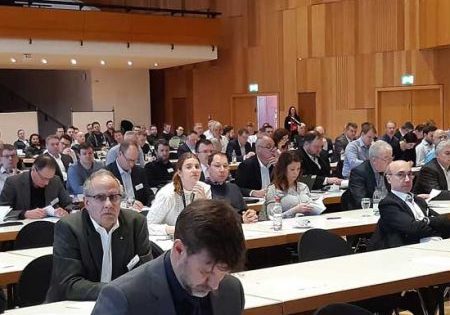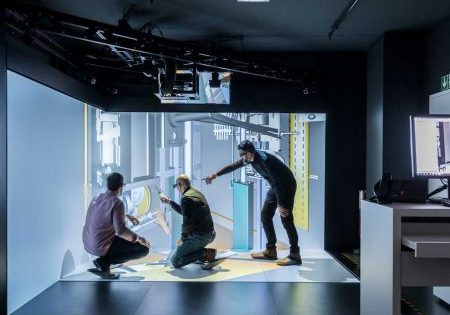Einstein Elevator
Jun 5, 2020
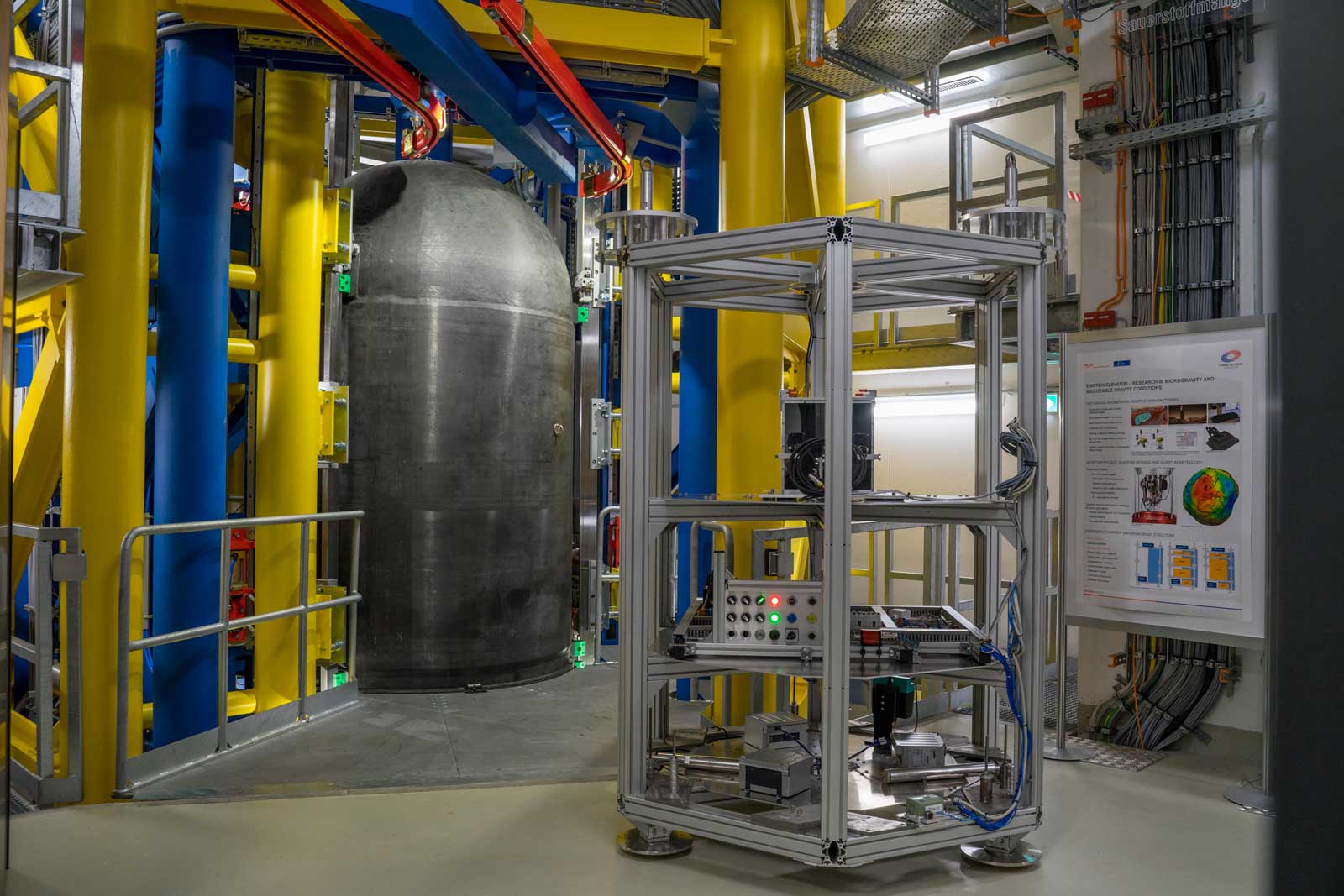
Earthbound test platform promises zero-gravity research.
Your author (USB) recently spoke with Professor Dr.-Ing. Ludger Overmeyer (LO) and Dipl.-Ing. Christoph Lotz (CL), Leibniz University of Hanover in Germany, Institute of Transport and Automation Technology, about the large-scale research unit “Einstein Elevator” at the Hanover Institute of Technology (HITec).
USB: Our readers are keen to know who the people are behind such a spectacular facility.
LO: I am a mechanical engineer, 20 years active at the University of Hanover. I am also chairman of the scientific board of the Laser Center Hanover.
CL: I joined the Institute as a research assistant in 2011 and am working on my doctorate. As project manager, I supervised the Einstein Elevator from the first draft of the idea through the installation to the first experiments.
USB: What are the key topics at the institute?
LO: Here, we are dedicated to classical conveyor technology: often belt conveyors, but also production technology. In the Excellence Cluster for Optical Technologies, we are fundamentally concerned with optical systems, such as automation using light. For elevator companies, our Einstein Elevator certainly is an interesting facility. For example, we are studying sensor technology, systems that record and process data while the elevator is moving in real time to control and regulate the drives under extreme conditions: faster and at higher acceleration than in passenger transportation. Compared to parabolic flights or the International Space Station, we can replicate experiments in zero gravity with statistical relevance relatively cheaply.
USB: What exactly is behind the name “Einstein Elevator?”
LO: The idea was new more than 10 years ago and still is. It emerged from a discussion with colleagues from the field of physics that began with a question: “Is it possible to build a machine on Earth that generates zero gravity with a high repetition rate?” The free drop tower concept developed in response to this question, which differs greatly from classic drop towers such as the drop tower in Bremen, Germany, was implemented in cooperation with companies from the region.
The Einstein Elevator — the world’s first and, so far, only device of its kind — has been in operation since October 2019 in a building erected in 2018 especially for this purpose. We are currently processing lunar rock (regolith) with the laser; the initial results are very promising. We are preparing further projects in parallel with cooperating research institutes. At present, we do not have any industrial partners.
USB: Where did the idea of developing the new drive and guide concept based on elevator guides come from?
LO: It was obvious. We use a linear motor to overcome the capsule’s aerodynamic drag. To keep the rolling drag low, we use roller guides we designed. This is not a new technique, but it is a new application. The design is similar to that of an elevator: Rollers pressed on from two sides guide the car — what we call the “gondola” — on a metal rail. But, the materials used are different from those used for an elevator. In elevators, soft rollers are used to achieve quiet running. Since we accelerate with five times the force of gravity, we need rigid rollers that can be pressed firmly to avoid excessive wear due to slippage, while, at the same time, reducing the risk of the rollers flattening when the elevator is at a standstill. We use a material from the machine-tool industry for these rollers.
USB: And the rails?
CL: The rails are not quite “off the rack,” either. Their special application, made to measure, is from the mechanical engineering industry. They were assembled by a medium-sized mechanical engineering company with subcontractors for sub-crafts with a 1/10-mm precise alignment over the entire 40-m height of the system. We also built the measuring system for it ourselves, because none of the systems on the market met the necessary specifications.
USB: Did you inquire with elevator manufacturers?
LO: Yes, we’ve made enquiries with some companies. The counter question came back, “How many units do you plan to build?” The answer, “One,” always led to refusal. That disillusioned us considerably. Initially, our colleagues from the university also doubted it could be done at all. We found the mechanical engineering company only by personal contacts. And, obviously, they did a good job, because everything is still running in its original state with unchanged alignment. Although the building is air-conditioned, this surprised us positively. We were concerned the first defects might occur after 100 “flights.”
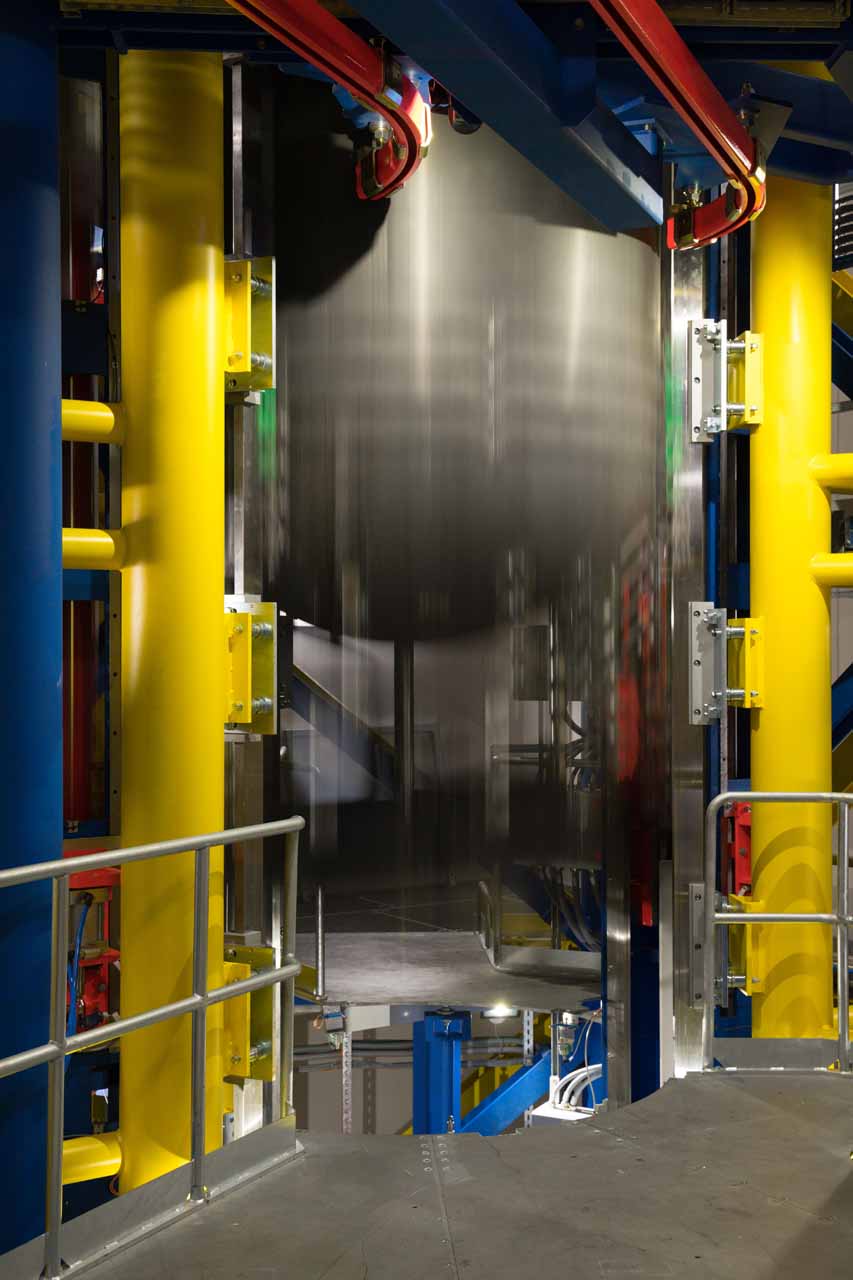
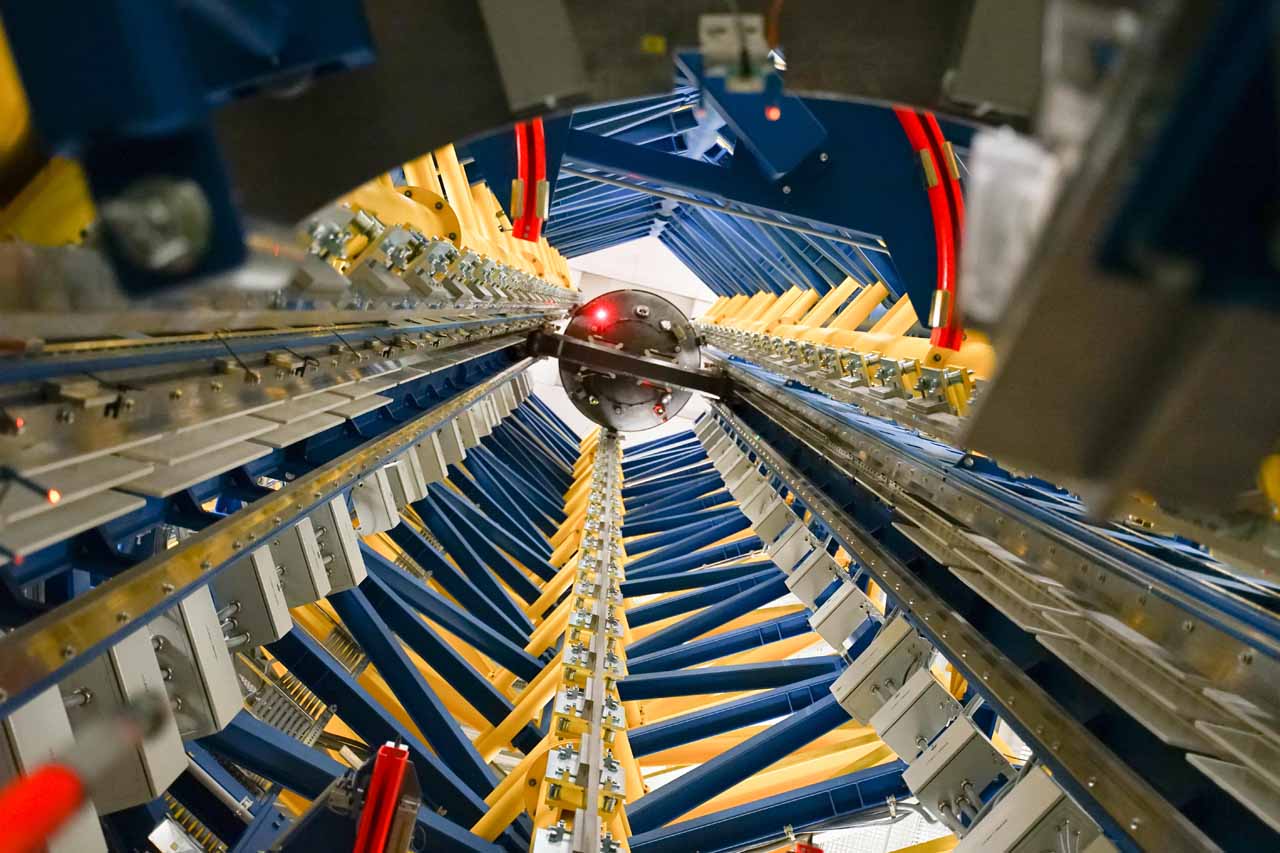
USB: What does the Einstein Elevator have in common with lifts?
LO: I already mentioned the drive; the motor is often installed in the same configuration in attractions of amusement parks. The most challenging part was our car. We had originally asked for the gondola to be made of aluminum for weight reasons, but we only received rejections, even from the space industry. Finally, we ended up with light and stable CFK from the Netherlands.
USB: What role does digitalization play?
CL: The drive technology must be controlled extremely precisely in the sub-millimeter range. We take measurements on the vehicle in a combination of accelerometer and position measuring and transmit the data to the drive. The joint development together with the drive manufacturer took a lot of time. In the subsequent test evaluation, we have to find out whether disturbances always occur at the same place, or whether they are caused by increased wear. These readings are monitored and stored in the control room, and the system is operated from there, too.
USB: And the automation?
LO: This goes into effect to have as few manual processes as possible in the test procedures. After each flight, the experiment inside the gondola is recentered, and the vacuum is automatically regenerated as required. The energy storage system, on the other hand, runs fully automatically. This way, we achieve a quicker workflow and can run a new experiment every 4 min up to 300 times a day.
USB: What is your biggest dream?
LO: I’m looking to find an answer to the question, “Can you write material into nothing?” We already know today that this is generally feasible. But there are still “small” questions left, like, “How does the production work in practice?” or, “How do I bring the material into the desired form?” We will not develop the space elevator here in Hanover, but we can achieve zero gravity with the help of supercapacitors and linear motors for 4 s of zero gravity. We are also happy to clarify quite “earthly” questions from the elevator industry to advance them technically. All who have the time, desire or need are welcome to contact us.
Get more of Elevator World. Sign up for our free e-newsletter.
